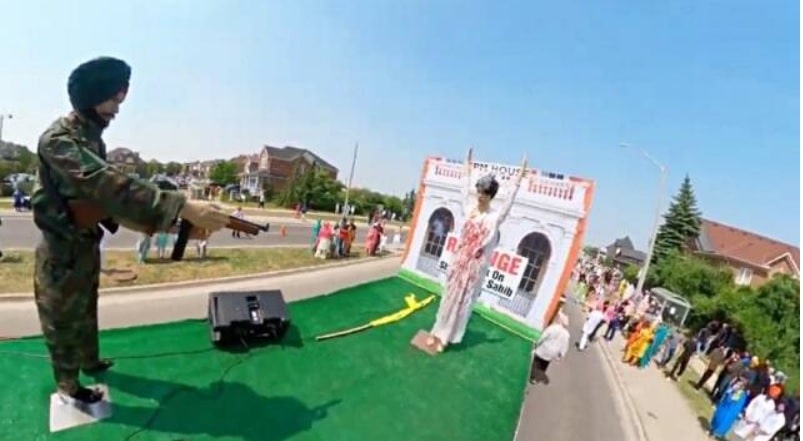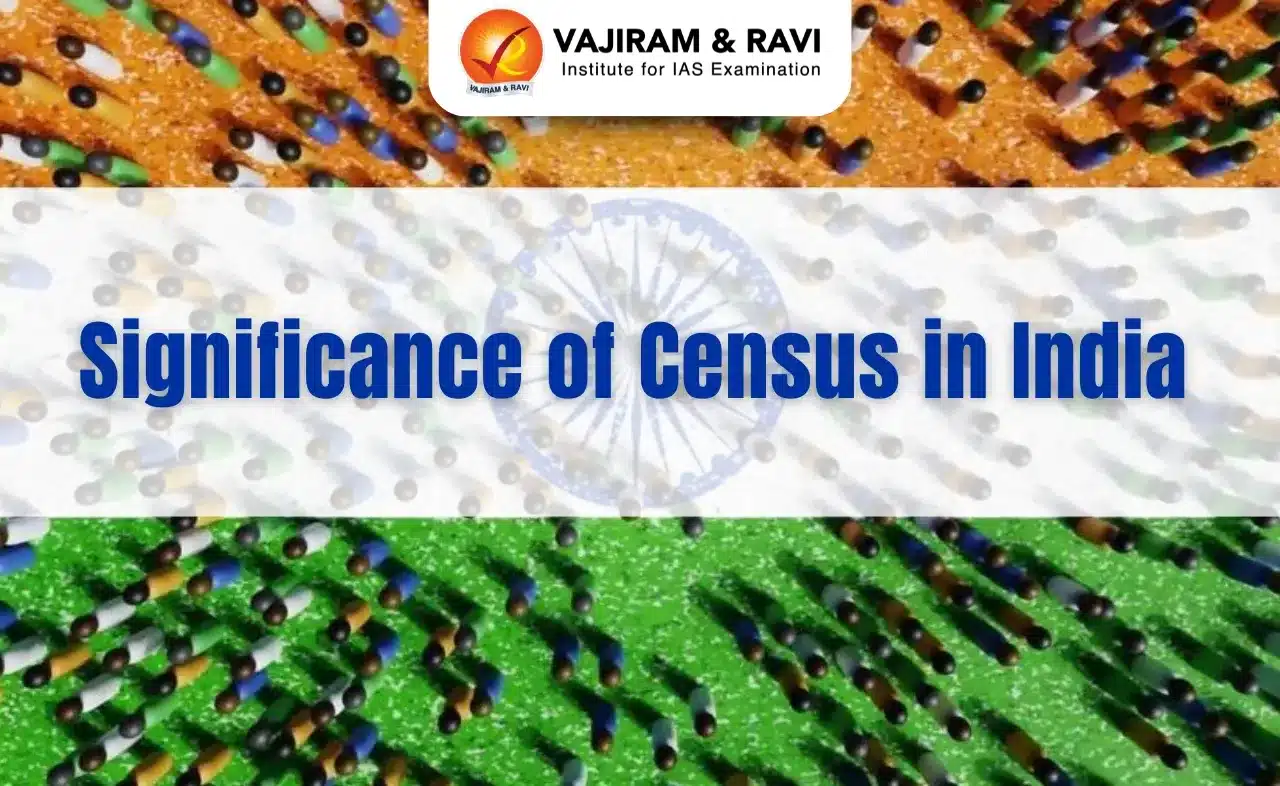What’s in today’s article?
- Why in news?
- What is the Khalistan movement?
- When did the movement start and why?
- News Summary: Celebration of Indira Gandhi’s killing in Canada
- What really happened at Canada event?
- India’s response
Why in news?
- A massive controversy has erupted over a social media video of a parade float depicting late prime minister Indira Gandhi’s assassination in Canada.
- In 1984, Indira Gandhi was assassinated by her two Sikh bodyguards, months after the military operation called the Operation Bluestar.
- The parade was allegedly organised by pro-Khalistani supporters on June 4, days before the 39th anniversary of ‘Operation Bluestar’ (celebrated on June 6).
What is the Khalistan movement?
- About
- The Khalistan movement is a fight for a separate, sovereign Sikh state in present day Punjab (both India and Pakistan).
- The movement was crushed in India following Operation Blue Star (1984) and Operation Black Thunder (1986 and 1988).
- Operation Blue Star began on June 1, 1984 to flush out militants from the Golden Temple and neutralise Bhindranwale.
- However, it continues to evoke sympathy and support among sections of the Sikh population, especially in the Sikh diaspora in countries such as Canada, the UK, and Australia.
- Khalistan and Canada
- As per the 2021 Canadian census, Sikhs account for 2.1 per cent of Canada’s population, and are the country’s fastest growing religious group.
- After India, Canada is home to the largest population of Sikhs in the world.
- In 2002, Toronto-based Punjabi-language weekly Sanjh Savera greeted Indira’s death anniversary with a cover illustration of her murder.
- The magazine received government advertisements, and is now a prominent daily in Canada.
- Last year in Brampton – home to Canada’s largest Sikh population – a pro-Khalistan organisation known as Sikhs for Justice (SFJ) held a so-called referendum on Khalistan.
- As per the 2021 Canadian census, Sikhs account for 2.1 per cent of Canada’s population, and are the country’s fastest growing religious group.
When did the movement start and why?
- Origin lies in India’s independence and subsequent Partition along religious lines
- The Punjab province, which was divided between India and Pakistan, saw some of the worst communal violence and generated millions of refugees.
- Lahore, the capital of Maharaja Ranjit Singh’s great Sikh Empire, went to Pakistan, as did holy Sikh sites including Nankana Sahib, the birthplace of Guru Nanak, the founder of Sikhism.
- While most Sikhs found themselves in India, they were a small minority in the country, making up around 2 per cent of the population.
- Struggle for greater autonomy & States Reorganisation Commission
- The political struggle for greater autonomy began around the time of Independence, with the Punjabi Suba Movement for the creation of a Punjabi-speaking state.
- The States Reorganisation Commission, in its 1955 report, rejected this demand, but in 1966, after years of protest, the state of Punjab was reorganised to reflect the Punjabi Suba demand.
- The erstwhile Punjab state was trifurcated into the Hindi-speaking, Hindu-majority states of Himachal Pradesh and Haryana, and the Punjabi-speaking, Sikh-majority Punjab.
- Anandpur Sahib Resolution
- In 1973, leaders of the Akali Dal met at the sacred town of Anandpur Sahib, the birthplace of the Khalsa.
- They released a list of demands that would guide the political path of the Akali Dal.
- Among other things, the Anandpur Sahib Resolution demanded autonomy for the state of Punjab, identified regions that would be part of a separate state, and sought the right to frame its own internal constitution.
- The Akali Dal was trying to cash in on the growing demand for an autonomous state which had emerged alongside the Punjabi Suba movement.
- This demand had gone global by 1971 — when an advertisement appeared on The New York Times proclaiming the birth of Khalistan.
- Rise of Jarnail Singh Bhindranwale
- Many in Punjab sought to go beyond just a demand for greater autonomy. One such man was Jarnail Singh Bhindranwale.
- Bhindranwale was a charismatic preacher who soon positioned himself as the authentic voice of the Sikhs.
- He found a captive audience in the state’s youth, especially those in the lower rungs of the social ladder, and massed a massive following.
- By 1982, he took up residence inside the Golden Temple, directing demonstrations and clashes with the police.
- The movement was geared towards the demands first articulated in the Anandpur Sahib Resolution.
- However, amidst growing religious polarisation, sectarian violence, and Bhindranwale’s own harsh rhetoric against Hindus, the then government declared the movement tantamount to secession.
- The aftermath of Operation Blue Star
- This operation gravely wounded the Sikh community around the world. It also galvanised the demand for Khalistan.
- Punjab saw the worst violence, becoming the hub of a long drawn-out insurgency that lasted till 1995.
News Summary: Celebration of Indira Gandhi’s killing in Canada
What really happened at Canada event?
- A tableau in the 5 km-long parade seemed to celebrate the assassination of former Prime Minister Indira Gandhi.
- A female figure was shown in a blood-stained white saree, with the hands up, as turbaned men pointed guns at her.
- A poster behind the scene read Revenge for the attack on Darbar Sahib.
India’s response
- The Indian high commission in Ottawa sent a note expressing displeasure to Global Affairs Canada, the Canadian foreign ministry.
- One cannot exceed freedom of expression like this, glorifying the assassination of the leader of a democratic nation.
- India warned Canada that giving space to separatists, extremists was not good for bilateral ties.
Q1) What is Operation Blue Star?
Operation Blue Star refers to a military operation conducted by the Indian government in June 1984 to remove Sikh militants who had taken shelter in the Golden Temple complex in Amritsar, Punjab, India. The operation was a response to the escalating violence and separatist activities led by Jarnail Singh Bhindranwale, who sought to establish an independent Sikh state called Khalistan. The Golden Temple, also known as Harmandir Sahib, is the holiest shrine for Sikhs and holds immense religious significance. The militants had fortified themselves inside the temple complex, using it as a base to launch attacks and store weapons.
Q2) What is the geographical location of Canada?
Canada is located in North America, specifically in the northern part of the continent. It spans a vast area, stretching from the Atlantic Ocean in the east to the Pacific Ocean in the west. Canada shares land borders with the United States to the south and maritime boundaries with France (overseas territories) and Denmark (Greenland) to the east. It is the second-largest country in the world by land area, covering approximately 9.98 million square kilometers (3.85 million square miles).
Source: Jaishankar slams Canada over ‘celebration’ of Indira Gandhi’s assassination: ‘requirements of vote bank politics’ | Hindustan Times | Times of India | India Today
Last updated on June, 2025
→ UPSC Notification 2025 was released on 22nd January 2025.
→ UPSC Prelims Result 2025 is out now for the CSE held on 25 May 2025.
→ UPSC Prelims Question Paper 2025 and Unofficial Prelims Answer Key 2025 are available now.
→ UPSC Calendar 2026 is released on 15th May, 2025.
→ The UPSC Vacancy 2025 were released 1129, out of which 979 were for UPSC CSE and remaining 150 are for UPSC IFoS.
→ UPSC Mains 2025 will be conducted on 22nd August 2025.
→ UPSC Prelims 2026 will be conducted on 24th May, 2026 & UPSC Mains 2026 will be conducted on 21st August 2026.
→ The UPSC Selection Process is of 3 stages-Prelims, Mains and Interview.
→ UPSC Result 2024 is released with latest UPSC Marksheet 2024. Check Now!
→ UPSC Toppers List 2024 is released now. Shakti Dubey is UPSC AIR 1 2024 Topper.
→ Also check Best IAS Coaching in Delhi






















